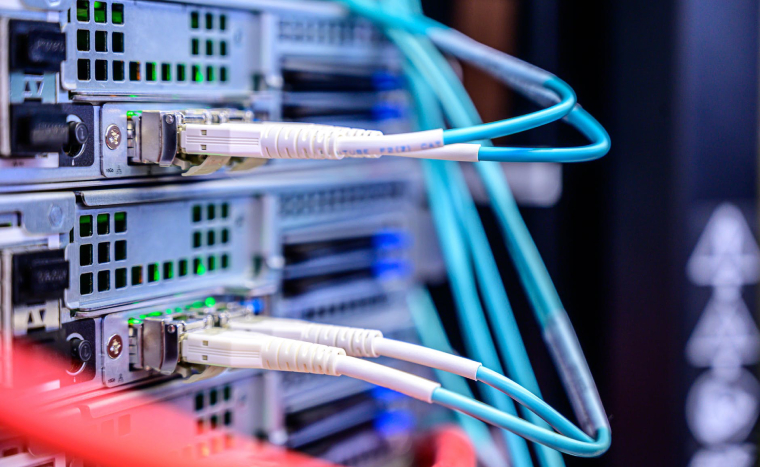Can you imagine living without the ability to turn on your computer and use the World Wide Web as the omnipotent and omniscient tool that it is? Can you even imagine the world without the Internet? You will probably have a negative answer to the previous two questions. However, you will also negatively respond to the following question: what exactly is broadband Internet? Sure, many people will say that this is the type of Internet connection they have set up at their homes or offices, but this doesn’t answer the question.
So, What Is Broadband Internet?
Technically speaking, the FCC currently defines broadband Internet as a connection that is faster than 4 Mbps. However, the more common definition is anything faster than a traditional 56 K dial-up Internet connection.
In most cases, it is true to tell people that broadband, also commonly called high-speed Internet, is the Internet connection they use. This is the most widely used Internet connection throughout the USA and worldwide. In addition, this form of Internet access indeed offers the highest Internet connection speeds. When compared to a dial-up connection, broadband Internet is the obvious choice.

Types of High-Speed Internet
There are five types of broadband Internet, and below they are listed and explained:
DSL – The Digital Subscriber Line Internet access is an Internet connection that comes to you through your telephone line. Contrary to what many people may think, you can use your Internet and phone simultaneously, as voice and Internet connection travel at different frequencies, commonly separated by a DSL splitter. DSL speeds range from 256 Kbps to over 6 Mbps, although the distance you are located from the telephone companies’ CO will affect the speed available.
Cable – If you have Cable TV, you can probably ask your Cable TV provider for Cable Internet. DOCSIS 3.0 cable connections can provide the fastest consumer Internet connections, with some cable companies, such as Comcast, offering speeds of over 100 Mbps in select areas. With cable internet, your connection speed will depend on how many users use the same bandwidth at any moment. So, you will not have the same Internet connection speed in the mornings and the evenings, as more active users will characterize the evenings, thus a somewhat slower connection.
READ MORE :
Satellite – Even though the satellite Internet connection is the slowest and the most expensive type of broadband Internet to set up, it is the only option for many living in areas where other types of broadband Internet are unavailable. The connection speed will, in this case, depend on weather conditions, and the speed will generally be lower than with the other three types of broadband Internet. Satellite Internet is also a poor choice for gaming due to the signal’s high latency (delay). This is due to the extreme distance the movement needs to travel from the Earth to the satellite and back.
Wireless – Wireless Internet is available from cellular providers such as Verizon, AT&T, Sprint, etc. It currently comes in two flavors, 3G and 4G. 3G or third-generation wireless is the most widespread and offers speeds comparable to low-end DSL services. 4G, or, as you may have guessed, fourth-generation wireless, is the new kid on the block and boasts much higher speeds. Even though the 4 G wireless network is expanding rapidly, relatively few locations provide widespread 4G coverage. Wireless broadband Internet is very convenient; however, its Achilles heel is that it has lower usage limits than DSL and cable plans. Most wireless providers charge outrageous overage fees or throttle your connection to a crawl when you exceed these modest bandwidth limits.
Fiber-optic is the least used and one of the fastest broadband Internet connections out of the four types mentioned here. The reason why it is the least used is the fact that not many areas have fiber-optic Internet connections available yet. However, where it is known, its cost is very competitive with standard DSL and Cable but provides much higher connection speeds. There are a couple of types of fiber optic Internet connections. FTTH (Fiber To The Home) This is the type of connection used by Verizon FiOS, which brings the fiber to your house; if you get the AT&T U-Verse version, it is FTTK (Fiber To The Kerb/Curb), which uses copper from the curb to your home. Both Fiber connections provide ADSL2+ Internet speeds of up to 50 Mbps and on-demand HD television and digital telephone service on the same line.
To choose one of these types of broadband Internet, you will first have to check and see which are available in your area. Some Internet services, specifically DSL, are susceptible to the distance of the line. For example, you might qualify for a specific level of service while your next-door neighbor doesn’t. Not all Internet service providers will offer the same terms and conditions, so you must shop around before making the final decision. You’ll want to pick the fastest broadband plan that fits your budget. In some select areas, this can be 100 Mbps+. But these extremely high-end broadband plans are also costly. You may find that a high-speed Internet plan in the 5 to 25 Mbps range might satisfy your Internet service needs at a much lower cost that won’t break your monthly budget.












